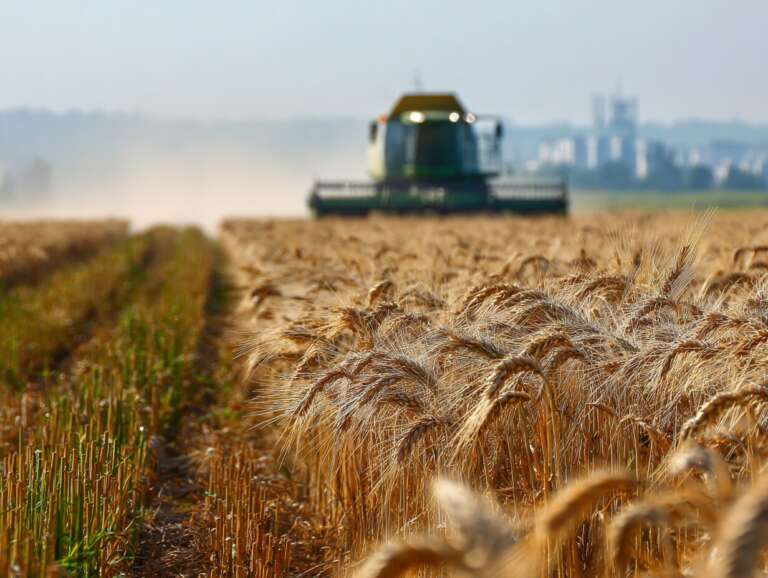Did you know that rising levels of CO2 in our atmosphere could significantly alter the way we grow our food? As climate change accelerates, the concentration of carbon dioxide is skyrocketing, and this isn’t just a distant environmental concern; it’s a pressing issue that directly impacts our agriculture and food security. The brutal truth is that while increased CO2 can enhance crop growth, it also poses serious risks to the nutritional quality of our food. Understanding this complex relationship is crucial for anyone invested in the future of farming and food production. Let’s dive into how these changes affect crop yield and quality, and why it matters for all of us.
TL;DR: Increased CO2 levels can boost crop yield but may reduce nutritional quality. Understanding CO2’s impact on agriculture is crucial for sustainable farming practices. Mitigation strategies are essential to balance productivity and sustainability.
Understanding CO2 and Its Role in Photosynthesis
Here’s what most people miss: CO2 is a fundamental player in photosynthesis, the process by which plants convert sunlight into energy. When plants absorb CO2, they use it to create glucose, which fuels their growth. This is where the CO2 fertilization effect comes into play. Elevated CO2 levels can enhance growth in certain crops, leading to higher yields.
For instance, staple crops like wheat and rice thrive in these conditions. Studies have shown that wheat yields can increase by up to 25% with higher CO2 levels. Imagine the potential for feeding a growing global population! But before you get too excited, let’s take a closer look at the double-edged sword of this phenomenon.
The Double-Edged Sword: Increased Yield vs. Nutritional Quality
The numbers are staggering, but here’s the reality: while rising CO2 may boost crop yields, it often comes at a cost to nutritional quality. Research indicates that crops grown in high CO2 environments can have reduced levels of essential nutrients such as zinc and iron. For example, a study published in Nature found that wheat grown under elevated CO2 conditions had up to 10% less zinc and 5% less iron.
This is not just a statistic; it’s a potential public health crisis. Nutritional deficiencies can lead to severe health issues, especially in vulnerable populations. As food security becomes increasingly precarious, we must ask ourselves: can we afford to sacrifice nutrition for yield? The implications are profound, and they challenge our understanding of agricultural sustainability.
The Impact of CO2 on Different Types of Crops
You won’t believe this, but not all crops respond to CO2 in the same way. Staple crops like wheat and rice may flourish, but specialty crops such as fruits and vegetables can exhibit varied responses. For instance, while tomatoes may benefit from increased CO2, their flavor and nutritional quality could suffer.
Geographical location also plays a crucial role. In regions where water scarcity is an issue, the benefits of CO2 might be offset by drought conditions. A study in the Journal of Agricultural and Food Chemistry highlighted that crops in arid regions may not experience the same yield increases as those in more temperate climates. This variability means that farmers must adapt their practices based on local conditions, which adds another layer of complexity to agricultural planning.
Agricultural Practices in a High CO2 World
So, what can farmers do in this high CO2 world? Here’s the brutal truth: adaptation is not just an option; it’s a necessity. Farmers can employ various strategies to mitigate the negative effects of increased CO2 while optimizing the benefits. Sustainable practices such as crop rotation, cover cropping, and soil health management can enhance resilience against climate variability.
For example, a farmer in California successfully implemented a cover cropping system that improved soil health and increased water retention, allowing crops to thrive even under stress. Research and innovation in agriculture are essential for developing new varieties that can withstand the changing climate while maintaining nutritional quality.
Policy Implications and Future Directions
The reality is shocking: without proactive policies addressing CO2 emissions and agricultural practices, we risk jeopardizing food security for future generations. Policymakers must prioritize funding and support for sustainable agriculture initiatives that help farmers adapt to the changing climate.
Moreover, consumers play a vital role in driving sustainable choices. By supporting local and sustainable food systems, we can encourage practices that prioritize both yield and nutritional quality. Initiatives like the Green New Deal in the U.S. aim to address these challenges by promoting sustainable agriculture and reducing carbon footprints.
Conclusion
In summary, the impact of CO2 on agriculture is a complex interplay of increased crop yield and potential declines in nutritional quality. As we navigate this high CO2 world, it’s crucial to consider how our food choices influence agricultural practices and sustainability. The future of food security depends on our collective actions today.
What are your thoughts on the relationship between CO2 levels and agriculture? Have you noticed changes in the quality of food available? Share your experiences in the comments or on social media, and let’s keep this vital conversation going.

